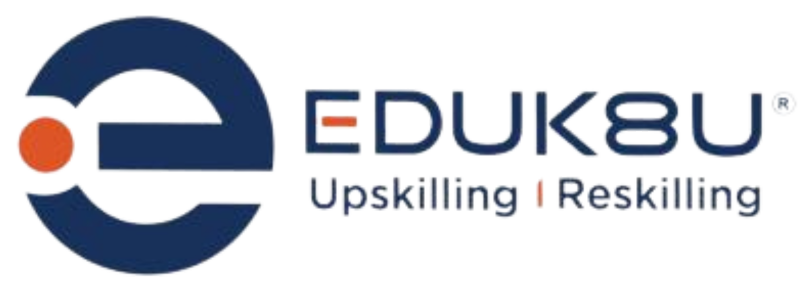The struggle by many organizations to become more agile is a result of the conflict between an organization’s existing stable structures and processes, and its proposed speed and flexibility. Organizations undergo an agile transformation to increase predictability and speed of providing value to customers, to create a culture of focus, innovation, and engagement, and to adapt to as well as leverage on market changes.
Start-ups and large organizations aim to grow speedily but are often hampered by bureaucracy. A truly agile organization is both stable and dynamic. The stability lies in its ability to have a fixed set of core elements serving as a backbone for it to be adaptive to the changing environment and new challenges and opportunities; hence, its dynamism.
Agile Leadership Strategy
The strategy for an agile transformation emanates from the knowledge of the current position of your organization and your target destination. Two dimensions are necessary when determining the highlighted positions.
- The first thing is to consider the values of your company in relations to planning – value predictable delivery or the ability to adapt to change. When organizations value both, a trade-off is inevitable. The more a system is designed for predictability, the more difficult it becomes to change. Also, the more it is designed for flexibility, the less predictable it becomes.
- The second consideration is the value of your customers from a planning perspective – emergent ecosystem (what your customer wants) or convergent ecosystem (that is, meeting and making commitments).
How to Attain Agile Transformation?
The survival of many organizations depends on the leader’s ability to undergo certain fundamental transformation to become more agile. Because agile organizations focus on the fluid adaptation of customers to environmental changes, leaders are expected to develop substantially new mindsets as well as capabilities in coping with the expected growth speed.
Therefore, to transform into an agile organization, the competencies that made leaders become successful in the past must be extended and transcended. For agile transformation, three variables are required of the leaders: self-transformation, team transformation, and building the capabilities to transform the organization. In a bid to achieve that, the following variables are necessary:
Embracing the Extent of the Change
One of the biggest challenges during agile transformations is related to organizational aptitude and culture, especially the misalignment between the daily requirements of jobs of people and agile ways of working, a lack of collaboration across units and levels, and employee resistance to changes. Agile transformations have a higher probability of success when they are embraced by comprehensive change-management processes and actions to co-create an agile-friendly mindset and culture.
These processes are expected to cover four main aspects – leaders and people within the organization align the behaviors and mindsets and behaviors required to move toward; they role-model the new behaviors and mindsets as well as hold each other accountable for the transformations; employers support their employees in their bid to develop new skills required of them to succeed in the future organization; and formal mechanisms are placed to support the changes, incentivizing and rewarding people to exhibit new behaviors.
Be Conspicuous on the Vision
Agile units that create a shared vision as well as the purpose and align on the vision through actionable strategic guidance tend to excel over their counterparts. Most companies that are yet to start a transformation process are unable to create a meaningful or clearly communicated vision.
To commence an agile transformation, it is essential to clearly articulate the expected benefits and how to measure the impact of the transformation. Then the top leadership collectively holds as well as supports the vision of the new organization. Proper communication of the vision will lead to the improvement in the employee performance management system as a ripple effect would happen from the top down.
Decide Where and How to Start
It is one thing to have a clear vision and another to develop a clear implementation plan. An organization that lacks a clear implementation plan will find it difficult to start an agile transformation. It is indisputable that plan will vary by company. Some variables that are considered include the vision and the part of the organization to be transformed.
The changes may be prototyped in smaller parts of the performance unit before extending them to the larger parts. Alternatively, changes could be made to foundational elements that are beyond a second unit. After this, the agile practices required by the organization to strengthen its agility transformation should be assessed.
This will ensure the mutual reinforcement of the actions taken across structure, process, people, structure, and technology. Finally, there should be the determination of the required resources and time frame for the achievement of the proposed momentum. However, in this process, the scope should remain manageable at any point in time.
As a result of the complexity and volatility of business environments, there is a need for organizational leadership to demonstrate agility. Agile leadership requires a shift from the predominant way of organizing, handling, and funding work to a more advanced mode. As much as agile organizations are stable, they still undergo structural, processes, and governance mechanisms redefinition or redesigning.
This is to allow for balance striking between stability and expansion of tentacles. One of the ways of ensuring and sustaining real change is by instilling the right kind of culture through leadership. With agile leadership leaders are able to operate in any system of thinking and see from different perspectives. These opportunities are as well extended to team members or subjects through building and sharing of common understanding and purpose. In other words, other people’s ideas get counted, irrespective of their status or position.
Conclusion
In conclusion, agile leadership is a critical factor for organizations seeking to thrive in the ever-changing business environment. It requires a shift in thinking, so by instilling the right kind of culture through leadership, organizations can ensure sustained real change and promote a common understanding among team members. In a nutshell, with the proper implementation of agile practices, organizations can adapt to market demands, improve productivity, as well as ultimately achieve success in their respective industries.
To explore more, join our Executive MBA or our Master in Human Resource Management double certificate program with SHRM (Society for Human Resource Management) and IUKL (Infrastructure University Kuala Lumpur).









